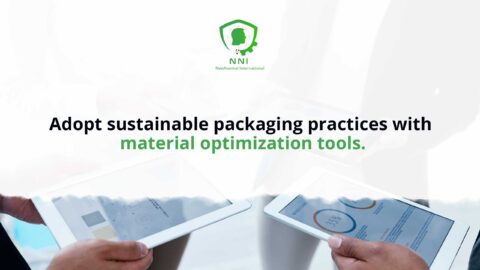Strategic Environmental Management: Tracking Carbon Footprints Per Product
In an era where environmental consciousness is paramount, the strategy to improve sustainability with carbon footprint tracking per product is crucial for businesses seeking to demonstrate their commitment to eco-friendly practices. This article explores the importance of carbon footprint tracking in fostering sustainable business operations.
The Significance of Carbon Footprint Tracking in Business
In today’s environmentally conscious world, consumers are increasingly demanding transparency and accountability from businesses regarding their environmental impact. This extends beyond company-wide initiatives and delves into the specific footprint of individual products. Enter product-level carbon footprint tracking, a powerful tool that illuminates the environmental cost of products at every stage of their life cycle, empowering businesses to:
Quantify the Unseen: Traditional environmental assessments often provide a blurred picture, failing to capture the nuanced impacts of individual products. Product-level carbon tracking delves into the details, quantifying the greenhouse gas emissions associated with each stage, from raw material extraction and manufacturing to distribution and end-of-life disposal. This granular understanding is crucial for identifying areas with significant environmental impact and prioritizing improvement efforts.
Identify Improvement Opportunities: With a detailed breakdown of carbon emissions across the product life cycle, businesses can pinpoint specific areas for improvement. Whether it’s reducing energy consumption in manufacturing, utilizing recycled materials, or optimizing logistics, product-level carbon tracking provides actionable insights that drive targeted and effective sustainability initiatives.
Optimize Supply Chain: By understanding the environmental impact of different suppliers and raw materials, businesses can make informed decisions about their supply chain. This transparency allows them to choose environmentally responsible partners and prioritize sustainable practices throughout their network, minimizing the overall carbon footprint of their products.
Inform Innovation: Product-level carbon tracking isn’t just about identifying problems; it’s about fostering innovative solutions. By understanding the environmental impact of different product designs and materials, businesses can develop new products with a reduced carbon footprint, leading to a more sustainable future for their brand and the planet.
Build Brand Trust and Reputation: Consumers today are increasingly conscious of the environmental impact of their choices. By demonstrating transparency and commitment to sustainability through product-level carbon tracking, businesses build trust and loyalty with eco-conscious customers. This positive brand reputation attracts new customers, strengthens relationships with existing ones, and fosters long-term success.
Embrace a Circular Economy: Product-level carbon tracking encourages businesses to adopt a circular economy approach, where resources are kept in use for as long as possible. By analyzing the end-of-life impact of products, businesses can develop strategies for reuse, recycling, and responsible disposal, minimizing waste and reducing their overall carbon footprint.
Product-level carbon tracking isn’t just about compliance; it’s about embracing a future of environmental responsibility and innovation. By revealing the hidden footprint of products, it empowers businesses to make informed decisions, optimize their operations, and develop sustainable products that meet the needs of a conscious consumer base. In the face of a changing climate and evolving consumer demands, product-level carbon tracking is no longer just a good practice; it’s a strategic imperative for businesses seeking to thrive in a sustainable future.
Change Management for Environmental Sustainability
Incorporating carbon footprint tracking into a company’s operations signifies a major change management initiative. It involves reevaluating supply chains, production methods, and overall business strategies to align with sustainability goals.
Executive Coaching for Sustainable Leadership
Effective leadership is key in driving environmental initiatives like carbon footprint tracking. Executive coaching can equip business leaders with the knowledge and skills to lead these initiatives, ensuring they are integrated successfully into the company’s ethos and operations.
Effective Communication in Sustainability Efforts
Effective communication is essential in promoting a company’s sustainability efforts. Transparently communicating the goals and progress of carbon footprint tracking helps build trust with customers and stakeholders, reinforcing the company’s commitment to environmental responsibility.
Generative AI in Enhancing Carbon Footprint Analysis
The use of generative artificial intelligence can significantly augment the process of carbon footprint tracking. AI algorithms can analyze complex data sets to provide deeper insights into the environmental impact of products and suggest more efficient, eco-friendly alternatives.
Conclusion
In conclusion, adopting the approach of “Improve sustainability with carbon footprint tracking per product” is a vital step for businesses committed to environmental stewardship. This practice not only aids in reducing ecological impact but also positions businesses as responsible leaders in the fight against climate change.
#SustainabilityInBusiness, #CarbonFootprint, #EcoFriendlyPractices, #AIinSustainability, #GreenBusiness







